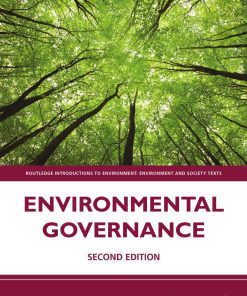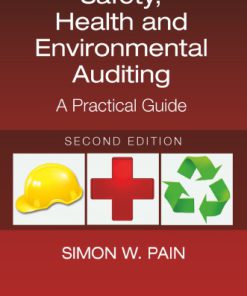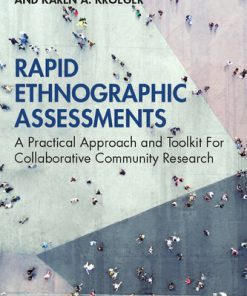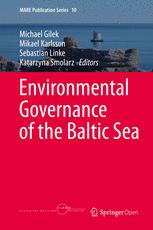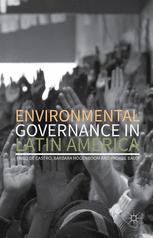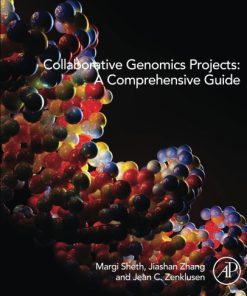Collaborative Environmental Governance Frameworks A Practical Guide 1st Edition by Timothy Gieseke 0429000447 9780429000447
$50.00 Original price was: $50.00.$25.00Current price is: $25.00.
Collaborative Environmental Governance Frameworks-A Practical Guide 1st Edition by Timothy Gieseke – Ebook PDF Instant Download/DeliveryISBN: 0429000447, 9780429000447
Full download Collaborative Environmental Governance Frameworks-A Practical Guide 1st Edition after payment.
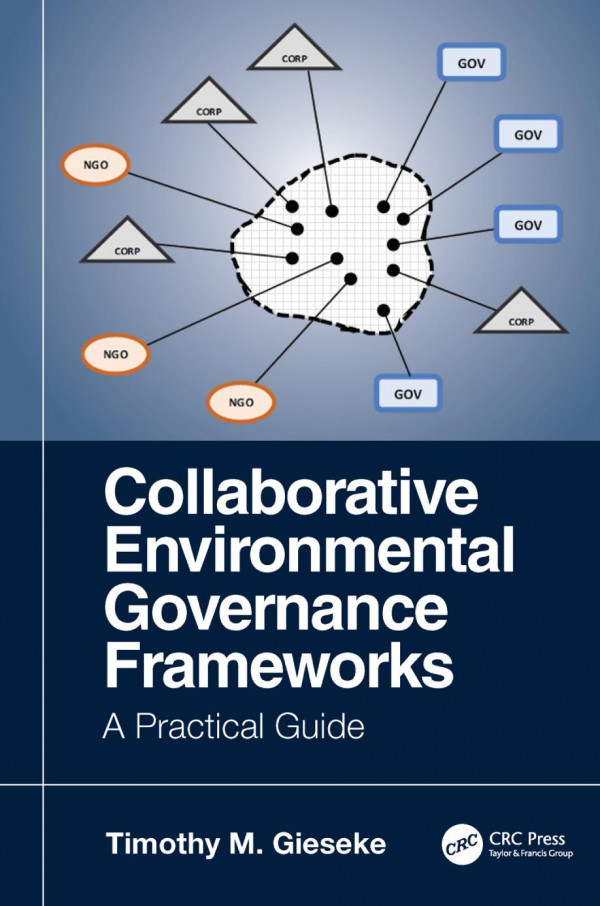
Product details:
ISBN-10 : 0429000447
ISBN-13 : 9780429000447
Author: Timothy Gieseke
This book takes a practical approach to understanding and describing collaborative governance for resolving environmental problems. It introduces a new collaborative governance assessment model and recognizes that collaborations are a natural result of organizations converging around complex issues. Rather than identifying actors by their type of organization, the actors are identified by the type of role they play. This approach is aligned with how individuals and organizations interact in practice, and their dependance on collaborations to solve emerging environmental problems. The book discusses real cases with governance issues and creates new frameworks for collaborations. Features: Addresses communities at all levels and scales that are gravitating toward collaborations to solve their environmental issues. Prepares and enables individuals to participate in collaborative governance and design collaborative governance frameworks. Introduces the first simplified and standardized model to assess governance using governance actors and styles. Explains governance in simple terms and builds governance frameworks from the individual’s perspective; the smallest, viable unit of governance in a collaboration. Describes “tools of convergence” for collaborative leaders to organize and align activities to create shared-governance outcomes and outputs.
Collaborative Environmental Governance Frameworks-A Practical Guide 1st Table of contents:
1 Introduction
1.1 Wicked Problems
1.2 Networks
1.3 Communicating to Collaborating
1.4 Hybrid Organizations
1.5 Collaborative Paradox
1.6 Collaborative Governance
1.6.1 Collaborative Governance DNA
1.6.1.1 Governance Actors
1.6.1.2 Governance Styles and Footprints
1.7 Sense-Making of Collaborative Governance Frameworks
Section I Something Special Is Happening
2 Entering a Collaborative Era
2.1 Emergence of Collaborations
2.2 What Is Collaboration?
2.2.1 Definitions
2.2.2 Collaboration as a Continuum of Interaction
2.2.3 Collaboration as a Process
2.3 Collaborations as a Social Apparatus
2.3.1 Collaboration Forms
2.3.2 Social Capital
2.3.3 Shared Governance
2.3.4 As a Wicked Issue Resolution Tool
2.4 Collaborations as a Living Solution
3 Collaborations as Hybrid Organizations
3.1 Organizational Definition and Theory
3.1.1 Organizational Knowledge
3.1.1.1 Intra-“Organization Knowledge”
3.1.1.2 Inter-“Organization Knowledge”
3.1.1.3 Shared Knowledge
3.2 Organizational Evolution
3.2.1 Biological Evolutionary Primer
3.2.1.1 Genetic Evolution
3.2.1.2 Symbiogenesis
3.2.1.3 Eusociality
3.2.1.4 Superorganisms
3.2.1.5 Biological and Social Evolution Connection
3.2.2 “Living” Organizations
3.2.2.1 Organizational Evolution
3.2.2.2 Organizational Structures
3.2.2.3 Organizational Change
3.3 Defining Hybrid Organizations
3.3.1 Hybridizing Forces
3.3.1.1 Glocalization
3.3.1.2 Fragmentation
3.3.1.3 Porous Boundaries, Fuzzy Borders
3.3.1.4 Border Spanning
3.3.2 Evolution of Hybrid Organizations
3.3.2.1 Network Communication
3.3.2.2 Coordination
3.3.2.3 Cooperation
3.3.2.4 Collaboration
3.4 Describing New Hybrid Organizations
3.4.1 The Nature of a Hybrid Organization
3.4.2 A Multidimensional Model
3.4.3 Governance Actor and Style Model
3.4.4 Governance-Focused Method
4 Preparing to Collaborate
4.1 When Not to Collaborate
4.2 When to Consider Collaborating
4.3 The Purpose of Collaborating
4.4 Factors to Consider Before Collaborating
4.4.1 Collaborative Phases
4.4.2 Scope and Context
4.4.3 Purpose
4.4.4 Member Selection
4.4.5 Antecedent Conditions
4.4.6 Motivation
4.4.7 Accountability
4.4.8 Communication
4.4.9 Perceived Legitimacy
4.4.10 Trust
4.4.11 Information Technology
4.4.12 Structure
4.4.13 Collaborative Clustering
4.4.14 Governance
4.5 Governance as a Cornerstone of Collaboration
4.5.1 Collaborative Frameworks
4.5.1.1 “Black Box” of Collaboration Processes
4.5.1.2 Collective Impact Initiatives
4.5.1.3 Integrated Framework for Collaborative Governance
4.5.2 Grappling with Collaborative Governance
4.5.2.1 What is Collaborative Governance?
4.5.2.2 Managing a Disarticulated State
4.5.2.3 Sweet Reward?
4.5.2.4 Identifying the First Steps
4.5.3 The Collaborative Endgame: Achieving Shared Governance
Section II The Science of Collaborative Governance
5 Of Actors and Styles
5.1 From Simplicity Comes Complexity
5.1.1 Reductionism
5.1.2 Systems Thinking and Emergence
5.1.2.1 Murmuring Boids
5.1.2.2 Biological DNA
5.1.2.3 Collaborative Governance
5.2 Collaborative Governance DNA
5.2.1 Governance Actors
5.2.1.1 Governance Compass
5.2.1.2 Four Governance Actor Types
5.2.2 Three Governance Styles
5.2.2.1 Hierarchy Governance
5.2.2.2 Market Governance
5.2.2.3 Network Governance
5.3 Collaborative Governance Emergence
6 What Style of Governance Do You “Swim In?”
6.1 Governance Style Dimensions
6.2 Governance Style “Personalities”
6.2.1 Analyzing Person Personalities
6.2.2 Analyzing Governance Style Personalities
6.2.2.1 Style Assessment
6.3 Governance Footprints
6.4 The Value of Assessing Styles and Footprints
6.5 Preparing for Collaborative Governance Ecosystems
7 Governance Footprints and Frameworks
7.1 Governance Footprints
7.1.1 Individual Actors, Styles, and Footprints
7.1.2 Intra-Organizational Actors, Styles, and Footprints
7.1.3 Inter-Organizational Actors, Styles, and Footprints
7.2 Collaborative Governance Paradox
7.2.1 Forming Relationships
7.2.2 Decision-Making Processes
7.2.3 Achieving Compliance
7.2.4 Governance Trilemma
7.2.5 Meta-Governance
7.2.6 Collaborative Managers as Meta-Governors
7.3 Collaborative Governance Frameworks
7.3.1 Collaborative Governance Footprints
7.3.2 Collaborative Governance Frameworks
7.3.2.1 Collaborative Framework Components
7.3.2.2 AWQCP Governance Styles, Frameworks, and Footprints
7.4 Collaborative Governance Shifts
7.4.1 Agriculture and Food Collaboration Shifts
7.4.1.1 Assessing Three Groups of Collaborations
7.4.1.2 Of Actors, Styles, and Footprints
7.4.1.3 Plotting Governance
7.4.1.4 Governance Shifts
7.4.2 Meta-Governance Sense-Making
7.4.3 Aligning Governance and “Point of Service”
Section III Social Complexity and Three Wicked Case Studies
8 Social Complexity
8.1 Complexity Theory
8.1.1 Simple and Complicated Systems
8.1.2 Complex Systems
8.1.3 Ecosystems Are Complex Systems
8.2 Dimensions of Social Complexity
8.2.1 Emergent Qualities and Effects
8.2.2 Self-Organizing Behaviors
8.2.3 Collective Intelligence and Identity
8.2.4 Networked Communities
8.2.5 Business Ecosystems
8.2.6 Multi-Sided Platforms
8.2.7 Shared Governance
8.3 Making Order of System Chaos
9 The Nature of Societal Problems
9.1 Kinds of Societal Problems
9.2 Problem Typology
9.2.1 Tame Problems
9.2.2 Wicked Problems
9.2.2.1 Source of Wicked Problems
9.3 Transdisciplinary Challenges
9.3.1 Disciplinary Evolution Along with Society
9.3.1.1 Disciplinary Approach
9.3.1.2 Multi-Disciplinary Approach
9.3.1.3 Interdisciplinary Approach
9.3.1.4 Transdisciplinary Approach
9.3.2 Application of Transdisciplinary Approach
10 The Nature of Three Wicked Case Studies
10.1 DNR CAMP: Wicked Case Study #1
10.1.1 CAMP Aquifer: Varied Outputs and Outcomes
10.1.2 CAMP Stakeholder Values
10.1.3 CAMP Governance Frameworks
10.1.4 Benson Area CAMP’s Wicked Issue
10.2 Ditch 86A: Wicked Case Study Issue #2
10.2.1 Ditch 86A’s Outputs and Outcomes
10.2.2 Ditch 86A’s Stakeholder Values
10.2.3 Ditch 86A’s Governance Frameworks
10.2.4 Ditch 86A’s Wicked Issue
10.3 AWQCP: Wicked Case Study #3
10.3.1 AWQCP’s Outputs and Outcomes
10.3.2 AWQCP’s Stakeholder Values
10.3.3 AWQCP’s Governance Frameworks
10.3.4 AWQCP’s Wicked Issue
Section IV Designing Collaborative Governance Frameworks
11 The Nature of Collaborative Governance
11.1 The Nature of Governance Actors
11.2 The Nature of Governance Styles
11.3 The Nature of Organizations
11.4 The Nature of Collaborative Governance
11.5 The Nature of Collaborative Governance Ecosystems
12 A Meta-Governor’s Role in Three Wicked Case Studies
12.1 Setting Up a CAMP Collaboration
12.1.1 Community of Actors
12.1.2 Governance Style Preferences
12.1.3 Creating a Collective Identity
12.1.4 Writing a Collective Groundwater Story
12.1.5 A CAMP Meta-Governor’s Roles and Objectives
12.2 Ditch 86A and a Local Governance Scorecard
12.2.1 State Policy Rules
12.2.2 State of Confusion
12.2.3 Local Governance Scorecard
12.2.4 Ditch 86A: A Meta-Governor’s Roles and Objectives
12.3 AWQCP in an Evolving Ecosystem
12.3.1 Bevens Creek Core 4
12.3.2 MMPA 5-Star Certification
12.3.3 MDA LEQA
12.3.4 AgEQA
12.3.5 AQWCP
12.3.6 AWQCP-PPP
12.3.7 A Meta-Governor’s Role in Collaborative Ecosystems
13 Making Collaborative Governance Happen
13.1 Who Are the Core Collaborators?
13.2 What Is the “Point of Service”
13.3 What Are the Issue Types?
13.4 Who Are the Potential Stakeholders?
13.5 What Is the Initial Governance Framework Assessment?
13.6 What Are the Tools of Convergence?
13.7 Beginning a Customized Collaborative Governance Template
13.8 Aligning Governance Styles with Problem Typology
13.9 What Is the Network Framework Type?
13.10 A Working Collaborative Governance Model
13.11 Does the Collaboration Achieve Shared Governance?
14 Conclusion
14.1 Something Special Has Happened
14.2 Preparing to Collaborate
14.3 Meta-Governors Wanted
14.3.1 Google® Governance Glasses
14.3.2 Seeing a Bigger Picture Clearer
14.4 A Social Apparatus to Resolve Wicked Problems
14.5 Collaborations Beyond Governance
People also search for Collaborative Environmental Governance Frameworks-A Practical Guide 1st:
how big is the human mitochondrial genome
from which parent is the human mitochondrial genome inherited
separating and segregating the human mitochondrial genome
how rapidly does the human mitochondrial genome evolve
do all humans have mitochondrial dna
Tags: Collaborative Environmental, Governance Frameworks, Practical Guide, Timothy Gieseke
You may also like…
Earth Sciences - The Environment
Engineering - Environmental
Safety, Health and Environmental Auditing: A Practical Guide, Second Edition Simon Watson Pain
Politics & Philosophy
Science (General)
Politics & Philosophy
Technique - Communication
Politics & Philosophy - Social Sciences
Collaborative Governance: Theory and Lessons from Israel Neta Sher-Hadar




